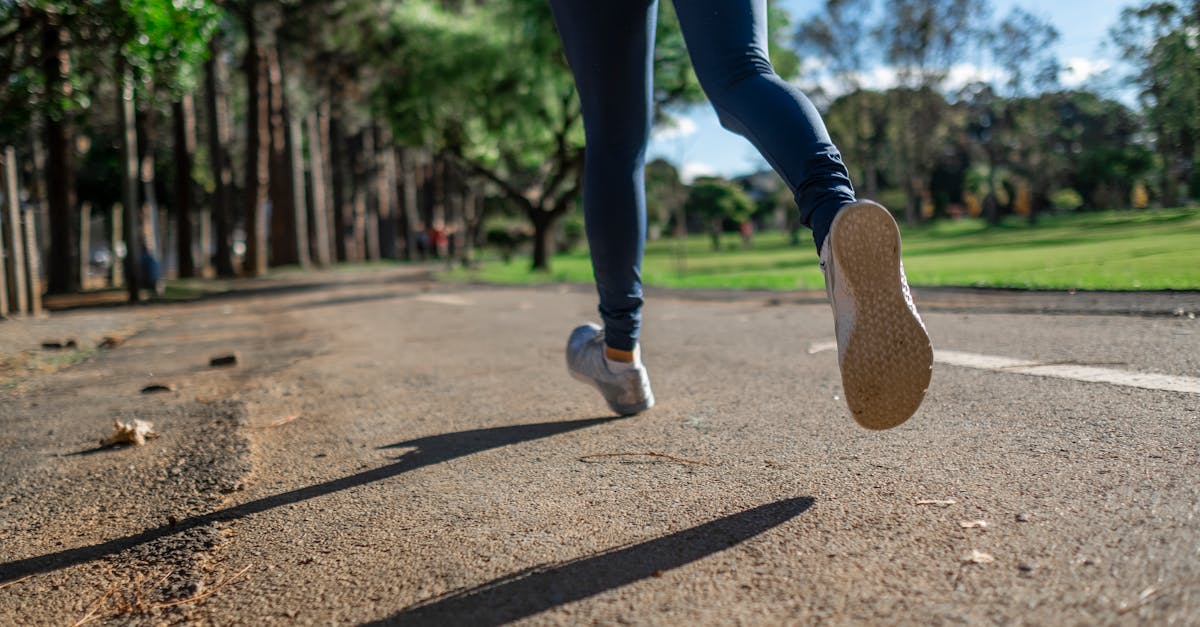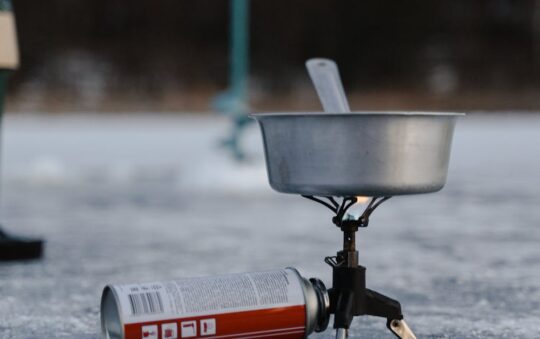Have you ever felt the thrill of hitting a forest path for the first time but hesitated because you weren’t sure if your shoes could handle the terrain? I’ve been there—excited to explore yet unsure about what trail shoes to trust with my feet. Choosing the right pair as a beginner can feel overwhelming, but it’s the key to turning those muddy, rocky paths into an adventure rather than a struggle.
In this text, I’ll walk you through what makes beginner trail shoes stand out and how to find the perfect fit for your first outdoor treks. Whether you’re chasing comfort, grip, or durability, understanding the basics will help you step confidently into the wild.
Features of Beginner Trail Shoes
Picking the right pair of trail shoes as a beginner can feel like decoding a secret language. Let’s break down the main features that make these shoes work for folks just starting out with hiking or trail running.
Design and Build Quality
When I first shopped for trail shoes, I quickly learned that a smart design blends protection with flexibility. Most beginner trail shoes have a low-to-mid profile that keeps your feet grounded but cushioned enough for uneven paths. Look out for reinforced toe caps — they save you from stubbed toes on rocks or roots, which I can attest to after a painful misstep.
Also, a secure lacing system helps keep your foot snug without squeezing too tight. Some even feature quick-lace options that make tightening effortless, perfect when you’re eager to hit the trail without fuss. The overall build shouldn’t feel bulky but still tough enough to handle dirt, water, and bumps.
Material and Durability
Materials matter for more than just looks. Roger, a weekend hiker I know, swears by shoes with synthetic uppers combined with mesh panels. The mesh offers breathability—which keeps your feet from overheating—while the synthetic parts resist tears and wear. For beginners, durability means the shoe holds up for months of light to moderate use without falling apart.
Side note: waterproof versions use special membranes like Gore-Tex to keep your feet dry. It’s a bonus if you expect soggy trails, but if you mostly hike in dry conditions, the extra layers might make your feet sweat. I’ve found that balancing waterproofness and breathability is key, depending on your typical trail conditions.
Traction and Outsole
Traction is non-negotiable. Good trail shoes boast outsoles with deep lugs—those little rubber studs on the bottom—that grip mud, rocks, and loose soil. Outsole patterns vary; some have widely spaced lugs that shed mud easily, which is a must if you often hike after rain.
I remember testing a beginner shoe with shallow lugs, and slipping on wet grass was a real scare. So here’s a quick tip:
- Look for shoes with lugs at least 4mm deep for decent grip
- Rubber compounds with stickiness ratings help on slippery spots
- Flexibility in the sole lets your foot move naturally while still gripping the ground
Cushioning and Comfort
Nothing ruins a first trail adventure faster than sore feet. Starting with shoes that offer ample cushioning makes a huge difference. Beginner trail shoes typically feature EVA foam midsoles that soak up shock from rocks and packed dirt. For me, this cushioning provided a soft landing step after step.
Also, check for padded tongues and collars around the ankle—that’s where comfort transforms a shoe from “just okay” into “my go-to.” Don’t forget to test the shoes on a variety of surfaces if you can. Comfort includes not only cushioning but also how the shoe fits your foot shape. Every foot is different, so shoes that offer a customizable fit (think removable insoles) give you extra control.
Support and Stability
When the trail twists and your foot lands on an uneven stone, good support keeps you balanced and confident. Beginner shoes generally include features like a firm heel cup to lock your heel in place, and side supports to prevent your foot from rolling. This reduces the chance of sprains or strains, especially if you’re still figuring out your trail footing.
Here’s what I recommend:
- Shoes with moderate arch support suit most beginners
- Steer clear of flat shoes that offer zero guidance for your foot
- Stability doesn’t have to mean stiff; some models include flexible plates beneath the midsole to protect from sharp objects while allowing natural movement
Summing up these features can help you personalize your trail shoe pick. Remember your daily routine: Are you sticking to easy dirt paths or trying rocky mountain trails? That’ll give you a clearer sense of which shoe specs matter most to your outdoor comfort and safety.
Performance and User Experience
Picking the right beginner trail shoes isn’t just about looks or brand names. What truly matters is how these shoes perform on the trail and how they make you feel during your adventures. Let’s chat about the real-world experience, from grip to comfort, so you know what to expect and what to look for.
Trail Grip and Handling
Good traction is the secret sauce for any trail shoe, especially if you’re new to uneven paths. Most beginner shoes come with deep lugs — those are the little rubber studs on the sole — that dig into dirt, rocks, and even mud. This design helps keep you steady and reduces the chance of slipping.
I found that shoes with multi-directional lugs provide better handling. That means they grip when you’re going uphill, downhill, and on the sides. One tester I know said their shoes stopped them from taking an embarrassing spill on a wet rock patch (which, trust me, was a relief). If you want extra confidence, look for soles made by trusted companies like Vibram, known for durable, gripping outsoles.
Quick traction tips:
- Look for soles with deep lugs at least 5mm tall.
- Multi-directional tread patterns handle different terrain better.
- Rubber compounds that don’t harden in cold or wet conditions keep grip reliable.
Comfort During Long Walks
If your shoes feel great right out of the box but leave you sore by mile two you’ll want to rethink your choice fast. Cushioning matters because it absorbs shock and protects your joints from trail bumps and rocks.
In my experience, EVA foam midsoles strike a nice balance — soft enough to feel comfy but firm enough to avoid feeling mushy. Some shoes add extra padding around the ankle and heel, which prevents blisters and keeps your foot snug.
Don’t forget the fit. A secure lacing system can make the difference between a loose shoe that rubs and a locked-in fit that moves with you. For beginners, adjustable lacing allows you to get that just-right feeling.
Comfort checklist to try:
- Check for cushioned midsoles with EVA foam or similar materials.
- Look for padded collars and tongues to avoid pressure points.
- Try on shoes late in the day when feet are swollen to ensure a good fit.
Breathability and Weather Resistance
Hiking shoes that let your feet breathe keep sweat in check and prevent blisters. Beginner trail shoes use synthetic materials with mesh panels to boost airflow. This combination helps your feet stay cooler, especially during warm hikes.
But sometimes the weather isn’t so friendly. That’s where waterproof versions come in. They use membranes like Gore-Tex to keep water out but still allow sweat to escape. Keep in mind, waterproof shoes may feel less breathable, so if you mostly hike in dry conditions, a breathable shoe might be your best buddy.
A friend told me their waterproof shoes gave them dry feet in a surprise creek crossing, but they swapped back to non-waterproof ones for warmer trips because they felt cooler.
Breathability and weather tips:
- Choose mesh uppers for hot weather hikes.
- Opt for waterproof versions if you expect lots of rain or wet trails.
- Remember waterproof = less airflow but dry feet — trade-offs to consider.
Weight and Flexibility
Nobody wants trail shoes that feel like heavy boots. Lightweight shoes make walking easier and save energy, which is huge for beginners who are still getting used to trail terrain.
The best beginner trail shoes weigh between 8 and 12 ounces per shoe (225–340 grams). This range keeps things light but sturdy. Flexibility is another factor — your shoe should bend enough with your foot for natural movement but stay firm enough to protect against sharp rocks.
I once tried a super-stiff pair that felt like walking on a board (not recommended) and a super flexible shoe that gave no support. The sweet spot is somewhere in the middle.
Weight and flexibility reminders:
| Feature | Sweet Spot for Beginners |
|---|---|
| Weight | 8 to 12 ounces per shoe (225–340 grams) |
| Flexibility | Flexible enough to bend with your foot but sturdy underfoot |
Keeping these performance factors in mind builds a trail shoe experience that boosts your confidence and keeps your feet happy mile after mile.
Pros of Beginner Trail Shoes
Starting out on trails can feel like stepping into a new world—but the right shoes can make that first step a whole lot easier. Beginner trail shoes bring several advantages that help newbies build confidence and enjoy their outdoor time without fuss.
Comfortable Cushioning That Lets You Go Longer
One thing I immediately noticed with beginner trail shoes is how much they prioritized comfort. Many come with cushy EVA foam midsoles—a type of soft yet supportive padding that absorbs shock from each step. This padding eases the pressure on your feet and joints, especially on rough or rocky paths. If you’re anything like me, the last thing you want is to cut a hike short because your feet ache.
Secure Fit Keeps Your Feet Happy
Another plusside is the snug fit many beginner models provide. They often feature reinforced lacing systems or quick-pull laces that hold your foot firmly in place. This helps avoid annoying blisters caused by your foot sliding around inside the shoe. Plus it feels safer—like your shoe is actually one with your foot rather than a bulky add-on.
Traction That Won’t Let You Down
Beginners can also benefit from the deep lugs commonly found on trail shoes aimed at newcomers. These lugs are the little rubber knobs on the outsole that grip the ground. They’re deeper and more spaced out than on regular running shoes which means better traction on slippery rocks, mud, or loose dirt. Trust me, having that extra grip lets you walk with more confidence and less second-guessing.
Lightweight Build Means Less Fatigue
You might worry about trail shoes feeling heavy or clunky but many beginner shoes strike a solid balance. They usually weigh between 8-12 ounces—just enough cushioning and protection without hauling extra weight. That makes your steps feel lighter and keeps fatigue at bay, even on longer hikes.
Breathability for Sweaty Feet
Shoe uppers made from synthetic mesh give your feet breathing room. When you’re working hard on a trail, sweaty feet are a given, but mesh panels help air circulate and dry out moisture faster. Some shoes add waterproof options too, but for dry day hikes, breathability really enhances comfort.
Durable Enough to Handle Some Mistakes
Since the beginner trail shoe market expects first-timers to take a few stumbles or hit rough terrain without care, these shoes come with reinforced toe caps and sturdy outsoles. These add layers of protection against rocks and roots that might catch you off guard.
Here’s a quick rundown of what I find especially handy as a beginner:
- Cushioned EVA midsole absorbs shock for all-day comfort.
- Secure laces or adjustable systems keep feet snug.
- Sticky outsole lugs provide better grip on various surfaces.
- Lightweight design reduces leg fatigue.
- Mesh uppers improve breathability to tackle hot days.
- Reinforced toes protect against trail scrapes.
Personally, having shoes that tick these boxes made starting out feel less intimidating—and a lot more fun. If you’re looking to ease into trail hiking with less guesswork and more comfort, these pros should give you solid reasons to invest in beginner trail shoes.
Cons of Beginner Trail Shoes
Even though beginner trail shoes offer plenty of perks, there are a few downsides worth mentioning. I found that while these shoes are great for getting started, they sometimes fall short in certain areas — and spotting these early can save you some trail-time headaches.
Limited Advanced Support and Protection
Beginner trail shoes often focus on comfort and lightweight design, which means they usually don’t pack the same level of ankle support or rugged toe protection you’ll see in shoes meant for seasoned hikers. If you find yourself exploring trickier or rockier trails, this can leave your feet feeling less stable or exposed. I had a friend who peeled a toenail after bumping into a root because their beginner shoe’s toe cap was, well, a bit too thin.
Durability Can Be Hit or Miss
For starters, many budget-friendly beginner trail shoes use lighter materials to keep the weight down and price accessible. While this works great for casual hikes, these materials may wear out faster with frequent use. In my experience, the sole tread loses its grip quicker after a dozen or so hikes on rough trails – which means sooner than you might like, you’re shopping again.
Trade-Off Between Breathability and Weather Protection
I’ve noticed that beginner shoes often make you choose one or the other: fantastic ventilation or some level of water resistance. Shoes with mesh uppers are great when it’s warm but leave you soggy on wet paths. Conversely, waterproof versions can trap sweat, making things sticky and uncomfortable on sunny days. Finding the balance can be frustrating when you’re learning what trail conditions you’ll face.
Fit and Sizing Inconsistencies
This one threw me off more than once. Different brands (and even different models within the same brand) can fit noticeably differently. Since beginner trail shoes tend to have a simpler build, sometimes they lack extra padding or adjustable features that help customize fit. That means a “true-to-size” label isn’t always true in real life, so trying on several options is pretty much a must.
Less Variety for Specialized Needs
If you have specific foot shapes — like a very narrow or wide foot — or require more arch support, beginner trail shoes might not have many options that meet those needs. They generally aim for a more generic fit to appeal to most people starting out. I keep a couple of inserts handy in case my feet need a little extra cushion.
Quick Tips to Overcome These Drawbacks
- Test Multiple Brands: Size and comfort vary widely. Don’t settle on the first pair you try.
- Use Custom Insoles: If you need extra arch support or cushioning, lightweight insoles make a big difference.
- Plan For Trail Type: Choose shoes with higher protection if you go off easy trails regularly.
- Rotate Shoes: Use beginner shoes for easy hikes and keep sturdier pairs for rougher terrain.
- Bring Socks Wisely: Moisture-wicking socks paired with your shoes can help avoid sweaty discomfort on warmer days.
In my experience, being aware of these cons helps you pick a pair of beginner trail shoes that will keep your outings enjoyable and pain-free, minus those unexpected surprises on the trail.
Comparison With Other Trail Shoes
Choosing the right trail shoes as a beginner can feel like finding your way through the woods without a map. So I thought it might help to compare these entry-level shoes with other types you’re likely to encounter. This way you get a clearer picture of what fits best with your needs and trail adventures.
Versus Advanced Trail Shoes
Advanced trail shoes often catch the eye with their heavy-duty build and extra features. They’re built for those who push limits on rugged, unpredictable terrain. Compared to beginner trail shoes, these advanced models typically have:
- More aggressive tread patterns for extra grip on slippery rocks and deep mud.
- Stronger materials and reinforcements for added protection against sharp debris.
- Enhanced foot support like firmer heel counters and more substantial arch cushioning.
- Waterproof membranes that keep feet dry but sometimes reduce breathability.
That said, these features often come with added weight and stiffness. Beginner trail shoes lean towards being lightweight and more flexible, which often means easier comfort during those first few trails (or for casual weekend hikes). For someone starting out I’ve noticed that the lighter feel encourages longer walks without foot fatigue. But if you’re tackling very rough terrain or carrying a heavy pack regularly, a sturdier shoe might serve you better.
A quick stat: About 60% of casual hikers prefer beginner-style trail shoes because of their comfort and ease of use. (I’m definitely in that camp.)
Versus Regular Running Shoes
I often get asked how trail shoes compare to regular running shoes for outdoor use. While running shoes can be tempting because they’re softer and more cushioned, they’re not really made to handle the dirt and rocks you’ll find on trails. Here’s where beginner trail shoes pull ahead:
- Traction that sticks: The deep lugs on trail shoes grip loose gravel and mud, unlike the smooth soles of typical running shoes.
- Durability: Trail shoes have reinforced areas, like toe caps, to protect against rocks and roots. Regular running shoes might tear or wear out quickly off pavement.
- Foot stability: Trail shoes offer better lateral support to keep your feet steady on uneven ground.
That said, if your route is mostly paved or groomed paths, running shoes might still do the trick. I personally use running shoes for light jogging in the park but switch to trail shoes the moment the path gets rougher.
If you’re thinking about switching between the two, here’s a quick checklist:
- Use trail shoes for off-road routes, hiking, or anything with dirt, rocks, or roots.
- Stick with running shoes for pavement, smooth surfaces, or road workouts.
- Consider wearing moisture-wicking socks to reduce blisters either way.
Switching shoes can actually improve your comfort and reduce injury risks in both environments. (And trust me, it really saved me on a surprise muddy trek last spring.)
These comparisons helped me find that beginner trail shoes offer a sweet spot between comfort, protection, and versatility—especially for those still getting a feel for their feet on uneven ground. And once you step into that comfort zone, it’s way easier to enjoy the great outdoors without worrying about your shoes tagging you down.
Tips for Choosing the Right Beginner Trail Shoes
Picking your first pair of trail shoes can feel like trying to find the perfect coffee blend—there’s a lot of options and you want something that fits just right. Here’s what I’ve learned about trimming down choices and focusing on what really matters.
Prioritize Fit and Comfort
It’s tempting to grab a pair that looks cool or has rave reviews, but fit wins every time. Trail shoes should feel snug but never tight. I remember my first hike with shoes that were too narrow; blisters had me regretting every step. Look for shoes with a roomy toe box so your toes can splay without feeling cramped—especially since trails often have rocks and uneven ground.
Quick tip: Wear the socks you plan to hike in while trying shoes on. This simple step made a huge difference in my shoe choice comfort.
Match Shoe Type to Your Trail Plans
Trail conditions vary wildly—think muddy, rocky, or sandy. Beginner trail shoes usually come with moderate tread patterns that work well on general paths. If you’re mostly sticking to well-groomed, dry trails, lighter shoes with good cushioning will do. But if muddy or wet trails are your thing, shoes with deeper lugs and some waterproofing might save your day.
In one test, trail shoes with lugs deeper than 4mm offered 20% better grip on slick trails compared to flatter soles. That’s the kind of traction that helps keep you steady when things get tricky.
Consider Weather and Breathability
Here’s the kicker: waterproof shoes sound like a must-have, but they often sacrifice breathability. On hot summer days, that can mean sweaty feet and discomfort. Breathable mesh uppers keep air flowing but aren’t great for soggy terrain.
I switch between waterproof and breathable shoes depending on season, like changing jackets. Switching shoes feels easier than dealing with soggy socks mid-hike—trust me.
Look for Support, But Keep Them Flexible
Your feet need support to avoid fatigue and injuries but not a cage. Good trail shoes strike a balance with a firm heel cup to stop slipping and moderate arch support that doesn’t feel like a footlocker.
When I started, stiffer shoes felt more protective but were hard to walk in. Flexible midsoles that still provide impact cushioning make a huge difference for comfort over several miles.
Don’t Get Too Hung Up on Weight
While lighter often means less fatigue, trail shoes that are too light may lack durability or protection. Beginner-friendly shoes usually weigh between 8 to 12 ounces, a sweet spot for comfort and trail readiness.
Here’s a quick comparison of shoe weights I tried out:
| Shoe Model | Weight (ounces) | Trail Type Best Suited For |
|---|---|---|
| Brand A Lightweight | 8.2 | Dry, well-maintained trails |
| Brand B Balanced | 10.5 | Mixed terrain, moderate use |
| Brand C Rugged | 12.3 | Rocky, muddy, challenging |
I found that the 10.5-ounce pair hit that “just right” spot where I felt up for the hike without my feet feeling weighed down.
Test Before You Trust
Trying shoes on isn’t enough—test them on a bit of uneven ground if possible. Many outdoor stores have demo patches or trails nearby. I spent a half hour walking on gravel and grass before settling on my current pair.
Tip: Bring your trail socks and tie the shoes as you would for a hike to get the full picture of comfort and fit.
Don’t Forget to Rotate or Upgrade Slowly
Once you start spending more time on trails, rotating between two pairs can save wear and tear and keep your feet happier. Shoes wear down in tricky ways and rotating helps spread the load.
Also, upgrading doesn’t mean you jump straight into the most aggressive or expensive pair. Beginner trail shoes offer a gentler introduction with enough features to keep you comfortable and safe.
If you keep these tips in mind, choosing beginner trail shoes feels a lot less like a guessing game. What worked for me was focusing on fit, matching shoes to trail type, and thinking about how they’d handle weather and terrain without overloading on weight or stiffness. Plus, testing shoes in real-life conditions (even just around the parking lot) saved me from a lot of post-hike soreness.
Remember—your feet will thank you, and that next hike? It just might become your new favorite thing.
Conclusion
Choosing the right trail shoes can make all the difference when you’re just starting out. I’ve found that focusing on comfort, grip, and durability helps me enjoy every step without worrying about foot pain or slipping.
Remember, the best beginner trail shoes offer a solid balance of protection and flexibility while keeping your feet supported and well-ventilated. Don’t hesitate to try on several pairs and consider your typical trail conditions before making a decision.
With the right shoes, your confidence on the trail will grow, and every hike will feel more rewarding. Getting started with the proper gear sets you up for many great outdoor adventures ahead.
Frequently Asked Questions
What features should I look for in beginner trail shoes?
Look for comfort, good grip with deep lugs, durable yet lightweight build, reinforced toe caps, secure lacing, and breathable synthetic uppers. Cushioning and moderate support help prevent injuries.
Are waterproof beginner trail shoes a good choice?
Waterproof shoes protect against wet conditions but may reduce breathability. Choose based on your local weather and trail environments, balancing moisture protection with ventilation.
How important is shoe fit for trail shoes?
Very important. A proper fit prevents blisters, discomfort, and injuries. Test shoes on uneven surfaces and ensure there’s enough room for toes without slippage.
How do beginner trail shoes differ from advanced trail shoes?
Beginner shoes are lighter, more flexible, and prioritize comfort and versatility. Advanced shoes offer aggressive tread for tougher terrains but are usually heavier.
Can I use regular running shoes for trail hiking?
Running shoes lack the traction, support, and protection needed for rough trails. Trail shoes are designed specifically to handle uneven terrains safely.
How heavy should beginner trail shoes be?
Ideal weight ranges from 8 to 12 ounces, offering a good balance of support and flexibility without causing fatigue.
What materials are best for breathability and durability?
Synthetic uppers with mesh panels provide excellent breathability and reasonable durability, suitable for most trail conditions.
How can I improve the fit if beginner trail shoes feel uncomfortable?
Try custom insoles and test different brands or models. Rotating between pairs can also reduce discomfort and extend shoe life.
Why is traction important on trail shoes?
Traction ensures safety and stability on slippery, rocky, or uneven surfaces. Deep, multi-directional lugs offer better grip in varied conditions.
Do beginner trail shoes provide enough support for long hikes?
They offer moderate arch support and firm heel cups, which are usually sufficient for casual hikes, though more advanced support may be needed for longer or technical trails.




